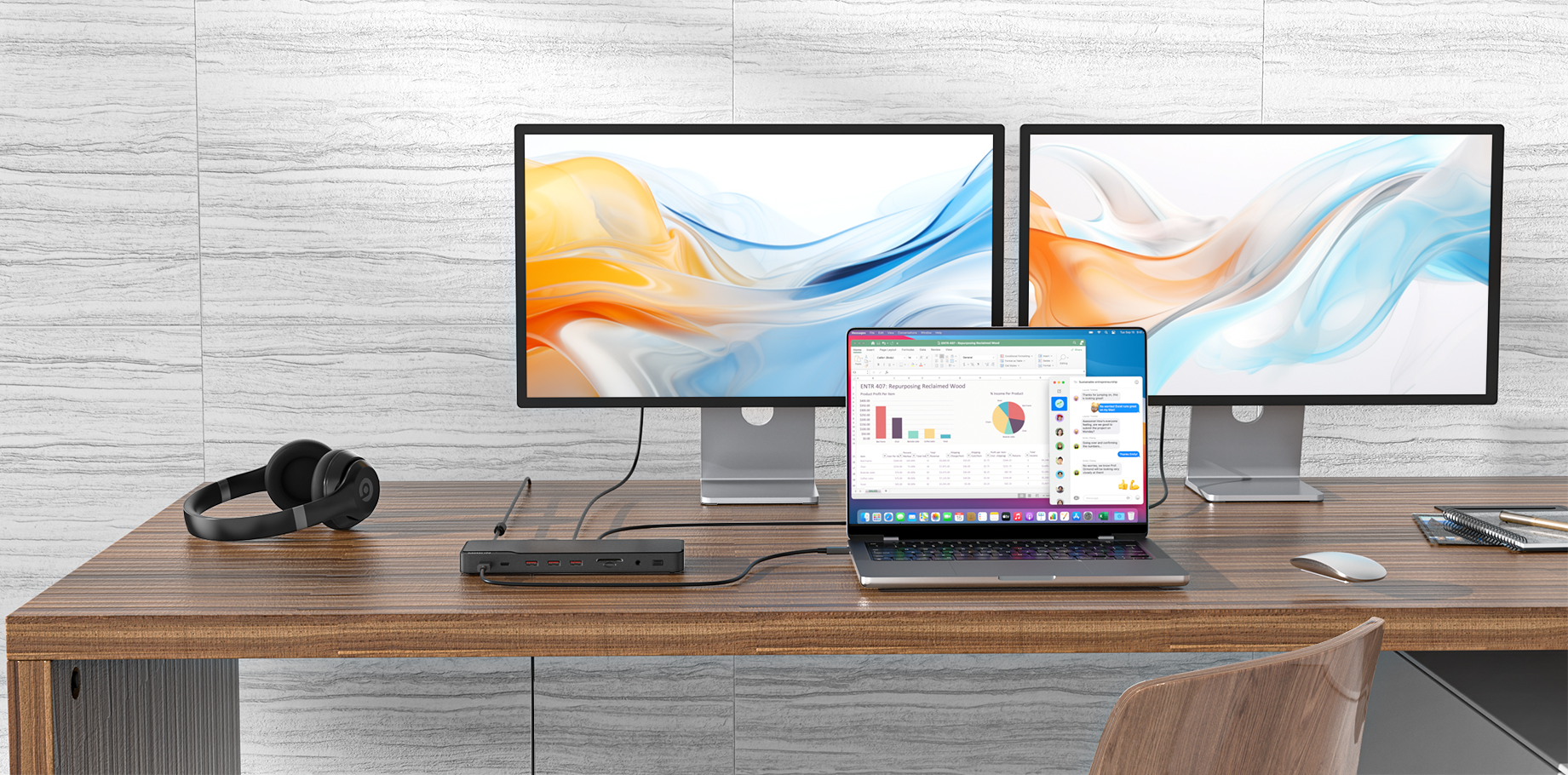DisplayPort is the latest display technology on the market and is generally considered a competitor to HDMI. The VESA specification, which describes DisplayPort technology, lists two types of transport modes. The first is SST (Single Stream Transport), and the second is MST (Multi-Stream Transport). Both modes relate to the transmission of video signals through a DisplayPort connection, but they serve unique purposes and cater to different user requirements. Get a more comprehensive understanding of them and their differences :
1. MST: Multi-Stream Transport Mode
MST is a feature of the DisplayPort 1.2 standard that allows multiple monitors to be connected in series or a daisy chain. This means you can use a single DisplayPort output on your computer or docking station to connect several displays, which the system will recognize as individual monitors. Each monitor in the chain can display unique content, functioning independently as if it were connected to its separate output.

MST is invaluable for users who require multiple displays for complex workflows and multitasking. It is especially beneficial in environments like trading floors, control rooms, or digital signage setups, where extensive screen real estate is paramount. However, the number of monitors and the resolution support in an MST setup will depend on the bandwidth of the DisplayPort and the capabilities of the graphics card.
2. SST: Single Stream Transport Mode
SST refers to the one-to-one relationship between the video source and the display device. Unlike MST, where a single output can manage multiple streams, SST can only handle one video stream to a single monitor. This doesn't limit the number of displays you can use; it simply means that each display requires its own direct connection to the source.

SST is the conventional method of connection, and it is straightforward. It works perfectly for users who need only one display or for those setups where every monitor shows the same content, effectively mirroring the source. This mode is also suitable if each monitor requires the full bandwidth provided by the DisplayPort to offer the highest resolutions and refresh rates, such as in gaming or high-resolution graphic design.
MST vs SST
① Connectivity: MST allows for multiple displays through a single port; SST requires a dedicated port for each monitor.
② Independence: MST supports independent screens with different content; SST mirrors the same content or extends a desktop across separate monitors.
③ Bandwidth: MST shares available bandwidth across displays; SST allocates full bandwidth to each display.
All in all, MST and SST are both essential features of DisplayPort technology but are designed for different scenarios. MST is optimal for multi-display configurations maximizing workspace, while SST suits users with singular high-resolution displays or who need to mirror content across several screens.




